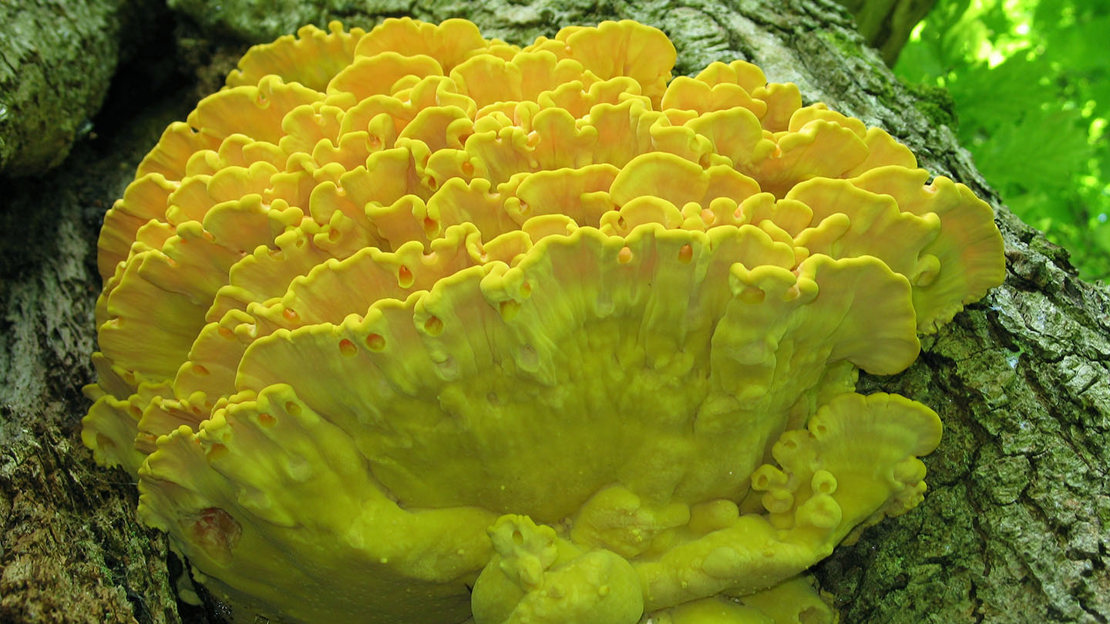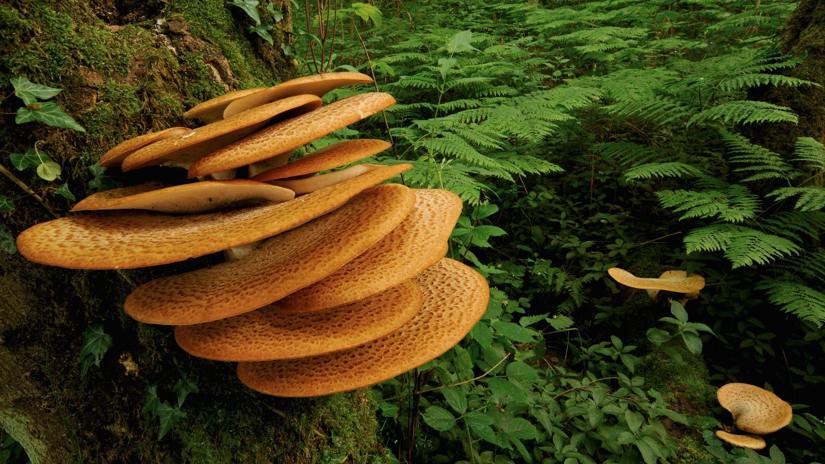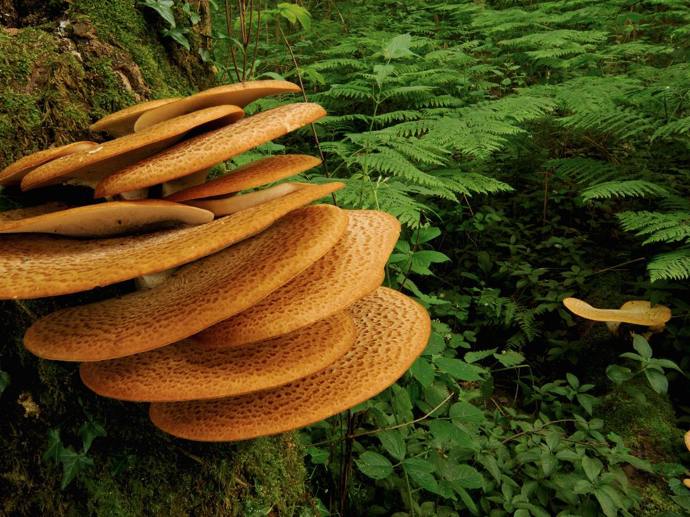Common names: chicken of the woods, chicken mushroom, sulphur shelf, sulphur polypore
Scientific name: Laetiporus sulphureus
Family: Polyporaceae
Fruiting season: late spring to autumn
Habitat: tree trunks in broadleaf woodland
Bright, bold and soft to the touch. With its distinctive look, chicken of the woods is easy to spot on the trunks of trees like oak and cherry.

Common names: chicken of the woods, chicken mushroom, sulphur shelf, sulphur polypore
Scientific name: Laetiporus sulphureus
Family: Polyporaceae
Fruiting season: late spring to autumn
Habitat: tree trunks in broadleaf woodland
A thick, fleshy bracket fungus, bright creamy yellow with bands of orange when young, fading to cream with age. It has succulent, soft and moist crumbly flesh. The upper surface is velvety, and underneath it has very small pores. It has a strong ‘fungusy’ smell.
Fruit body: bracket-form with round, yellow pores.
Spores: white, sometimes pale yellow.
Not to be confused with: giant polypore (Meripilus giganteus), which is very similar but brown in colour.
Chicken of the woods is a common species in the UK. It grows mainly on oak tree trunks, but can also be seen on the trunks of yew, cherry, sweet chestnut and willow from late spring to autumn.

Credit: www.pqpictures.co.uk / Alamy Stock Photo
Chicken of the woods is a vital species, supporting a host of wildlife. There are some specialist beetles which only feed on bracket fungi like chicken of the woods, including the hairy fungus beetle (Pseudotriphyllus suturalis). It is also eaten by deer.
Chicken of the woods fungus is edible, although it does not agree with everyone. It has been known to cause dizziness and stomach upset in some people.
Chicken of the woods is also thought to cause issues when growing on the very poisonous yew tree. Some sources state this is due to the fungus absorbing toxic alkaloids from the yew, while others report it's more likely due to the fungus not being cleaned properly before consumption. Chicken of the woods contains lots of folds and will grow around obstacles, so may contain hidden yew needles or pieces of the bark which are toxic in even small amounts. The best advice is to avoid foraging chicken of the woods from yew trees, just in case.
Chicken of the woods creates brittle brown rot and hollows out heartwood, leaving the living sapwood of the tree untouched.


Amy Lewis • 21 Oct 2021
Bracket fungi, also known as shelf or polypore fungi, grow on both dead and living trees. Here we list some of the UK's more common and easily distinguished types to get to grips with.